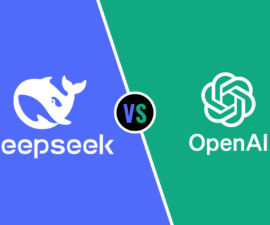Balancing full-time work with an ambitious learning goal like mastering AI and Machine Learning (ML) can be undeniably challenging. Committing to rigorous study alongside your existing workload demands careful planning and unwavering dedication. However, with the right approach and mindset, this goal is entirely achievable. The rewards – career advancement, personal growth, and the ability to shape the future with cutting-edge technology – are well worth the effort. Here’s a comprehensive guide to help you navigate this exciting journey and successfully master AI and Machine Learning while maintaining your professional commitments.
1. Define Your Goals and Learning Style: A Deeper Dive
1. 1. Goal Setting:
- Specificity is Key: Don’t just say “learn AI/ML.” Be specific about what you want to achieve. Do you want to:
- Become proficient in building and deploying ML models?
- Integrate AI/ML into your current workflow to improve efficiency?
- Transition into a career focused on AI/ML research or development?
- Gain a foundational understanding to stay informed about the latest advancements?
- Develop a personal project that leverages AI/ML capabilities?
- Align Goals with Resources: Once you have specific goals, research available resources and learning paths that align with them. For example, if your goal is to apply Machine Learning in your current job, look for courses or tutorials focused on specific applications relevant to your domain.
- Set Milestones: Break down your overall goal into smaller, achievable milestones with specific deadlines. This helps track your progress, stay motivated, and adjust your learning plan as needed.
1.2. Identifying Your Learning Style:
- Understanding Learning Styles: There are various learning styles, with individuals preferring different methods to absorb and retain information. Some common styles include:
- Visual Learners: Thrive on visual aids like diagrams, infographics, and videos.
- Auditory Learners: Learn best by listening to lectures, podcasts, or audiobooks.
- Kinesthetic Learners: Benefit from hands-on activities, experiments, and practical projects.
- Reading/Writing Learners: Prefer text-based resources like books, articles, and code examples.
- Self-Assessment: Reflect on how you have learned effectively in the past. What formats and activities engaged you and helped you understand concepts best? Consider taking online quizzes or assessments to identify your dominant learning style.
- Embrace Multiple Learning Methods: While you may have a dominant style, don’t limit yourself. Experiment with different resources and approaches to find the most effective combination for you.
By setting clear goals and understanding your learning style, you can create a personalized and efficient learning plan that maximizes your chances of success in your AI/ML journey while balancing your work commitments.
2. Building a Strong Foundation: Mastering the Essentials
A solid foundation in several key areas is crucial for effectively grasping the concepts and applications of AI and Machine Learning (ML). Let’s delve deeper into each essential:
2.1. Mathematics:
- Linear Algebra: This branch of mathematics underpins many ML algorithms, particularly those dealing with data representation, dimensionality reduction, and optimization. Understanding concepts like matrices, vectors, eigenvalues, and eigenvectors becomes central to working with data in AI/ML.
- Calculus: Familiarity with differentiation and integration is essential for understanding gradient descent, a core optimization technique used to train ML models. Additionally, concepts like limits and continuity play a role in analyzing the behavior of algorithms.
- Probability and Statistics: These fields equip you with the tools to analyze data, draw inferences, and evaluate the performance of ML models. You’ll need a grasp of concepts like probability distributions, hypothesis testing, correlation, and various statistical tests.
2.2. Resources for Building Your Math Foundation:
- Online Courses: Platforms like Coursera, EdX, and Udacity offer various courses on linear algebra, calculus, and statistics, often with video lectures, practice problems, and quizzes.
- Textbooks: Classic textbooks like “Linear Algebra Done Right” by Sheldon Axler and “Introduction to Probability and Statistics” by M. David Freedman offer in-depth explanations and practice exercises.
- Interactive Tutorials: Websites like Khan Academy and 3Blue1Brown provide interactive tutorials with visualizations and gamified learning to grasp mathematical concepts effectively.
2.3. Programming:
- Python: Widely considered the go-to language for AI and Machine Learning due to its readability, extensive libraries, and large community support. Libraries like TensorFlow, PyTorch, and scikit-learn provide powerful tools for building, training, and deploying ML models.
- Learning Resources:
- Online Tutorials: Platforms like Codecademy, DataCamp, and Google’s Learn Python offer interactive tutorials and projects to learn Python programming fundamentals.
- Coding Bootcamps: Consider intensive bootcamps to acquire comprehensive Python skills within a shorter timeframe, often with career support and project-based learning.
- Online Communities: Engage with online communities like Stack Overflow to ask questions, get help, and learn from experienced programmers.
3. Structuring Your Learning Journey: A Roadmap to Success
Balancing work, personal life, and your AI and Machine Learning learning journey requires a well-structured approach. Here are key strategies to optimize your learning:
3.1. Time Management:
- Schedule Time Effectively: Create a realistic weekly or monthly schedule that incorporates dedicated learning blocks, even if they’re short bursts of 30-60 minutes. Consistency is crucial for retaining information and making steady progress.
- Utilize Available Time: Identify “dead time” in your day, like commutes or lunch breaks, to listen to podcasts, watch short video lectures, or review code snippets. Every little bit counts!
- Prioritize and Delegate: Be realistic about your commitments and delegate tasks where possible. Prioritize learning activities that align with your short-term and long-term goals.
3.2. Selecting the Right Learning Resources:
- Leverage Your Learning Style: Explore various resources that cater to your preferred learning style. If you’re a visual learner, utilize video tutorials with clear visualizations. If you prefer text-based learning, opt for in-depth books or articles. Experiment with different formats to find what works best for you.
- Curate a Learning Stack: Combine diverse resources like online courses (e.g., Coursera, EdX), interactive tutorials (e.g., Khan Academy, 3Blue1Brown), informative blogs, and relevant YouTube channels for a comprehensive learning experience.
- Structured Programs or Self-Directed Learning: Consider your learning preferences. If you thrive on guidance and structure, online programs with predefined curriculums and assessments might be suitable. If you prefer flexibility and self-directed learning, explore individual resources and build your own learning path.
3.3. Hands-on Practice: From Theory to Action:
- Active Learning is Key: Don’t just passively consume information. Engage in active learning by taking notes, summarizing key concepts, or discussing them with others.
- Practice Through Coding Challenges: Participate in online coding challenges on platforms like HackerRank or LeetCode. These platforms offer timed challenges to test your coding skills and problem-solving abilities in an AI and Machine Learning context.
- Build Personal Projects: Apply your theoretical knowledge by working on personal projects that pique your interest. Start with smaller projects and gradually increase complexity as you gain experience. Consider open-source projects on platforms like GitHub to contribute to real-world applications while collaborating with others.
- Seek Feedback and Mentorship: Don’t hesitate to seek feedback on your code or project ideas from online forums, communities, or mentors with experience in AI and ML. Constructive feedback can help you identify areas for improvement and accelerate your learning.
4. Fueling Your Journey: Maintaining Motivation and Engagement
Staying motivated and engaged throughout your AI and Machine Learning (ML) learning journey is crucial for sustained progress. Here are effective strategies to keep the fire burning:
4.1. Connect with the Community:
- Join Online Forums and Groups: Immerse yourself in online communities dedicated to AI and ML. Platforms like Reddit, Discord, and Facebook often have active groups where you can connect with learners and professionals at various stages.
- Participate in Discussions and Ask Questions: Actively engage in discussions, share your learning experiences, and ask questions. By contributing to the community, you’ll gain new insights, receive valuable feedback, and build a network of like-minded individuals.
- Find a Study Buddy: Partner with other learners to hold each other accountable, share resources, and motivate each other through challenges.
4.2. Network with Professionals:
- Attend Meetups and Conferences: Look for local or online meetups and conferences related to AI and Machine Learning. These events offer opportunities to network with professionals, learn about the latest advancements, and gain valuable career insights.
- Connect on LinkedIn: Build connections with professionals working in the field on LinkedIn. Engage in discussions, follow their posts, and consider reaching out to them for informational interviews to learn about their experiences and career paths.
- Seek Mentorship: Consider finding a mentor with experience in AI/ML who can provide guidance, support, and feedback on your learning journey. You can find potential mentors through professional networks, online communities, or university programs.
4.3. Celebrate Your Achievements:
- Track Your Progress: Regularly assess your learning by taking online quizzes, participating in hackathons, or completing small projects. Track your progress through a journal, to-do list app, or progress tracker.
- Acknowledge Milestones: Celebrate your achievements, big or small. Completing a course, solving a challenging problem, or successfully building your first project are all milestones worth recognizing.
- Reward Yourself: Set up a reward system for achieving specific learning goals. This could be anything from taking a break to watch a related documentary to treating yourself to a small gift. By acknowledging and celebrating your progress, you’ll maintain a positive and motivated mindset throughout your AI/ML learning journey.
5. Exploring Additional Strategies: Optimizing Your Learning Journey
Beyond the core strategies, consider these additional techniques to further enhance your AI and Machine Learning (ML) learning experience:
5.1. Microlearning: Mastering Bite-Sized Chunks:
- Break Down Complex Topics: Don’t try to devour massive amounts of information at once. Instead, break down complex topics into smaller, manageable modules that you can learn and retain effectively during short breaks, commutes, or waiting periods.
- Utilize Microlearning Resources: Many online platforms offer microlearning resources specifically designed for busy professionals. These include short video lectures, interactive quizzes, and bite-sized articles focused on specific topics within AI and ML.
- Leverage the Power of Spaced Repetition: Utilize spaced repetition techniques, where you revisit previously learned material at increasing intervals to reinforce knowledge and improve long-term retention. Flashcard apps or spaced repetition software can be beneficial for this purpose.
5.2. Specialization: Tailoring Your Learning to Your Domain:
- Align Learning with Your Job: If your goal is to leverage AI/ML in your current domain, consider specializing in a subfield directly relevant to your work. For example, if you work in finance, explore areas like financial forecasting or fraud detection using ML.
- Identify Industry-Specific Applications: Research ongoing AI and Machine Learning applications in your field. Look for online courses, tutorials, or projects focused on these specific applications to gain practical skills directly applicable to your work.
- Network with Domain Experts: Connect with professionals working at the intersection of AI/ML and your industry. Seek their insights on relevant subfields, learning resources, and career opportunities in this specialized area.
5.3. Seek Mentorship: Finding Your Guide:
- Benefits of Mentorship: Having a mentor can significantly accelerate your learning journey. Mentors can provide guidance on learning paths, career advice, and feedback on your projects. They can also help you overcome challenges and stay motivated.
- Finding the Right Mentor: Look for mentors with experience in your desired AI/ML specialization or career path. You can find potential mentors through professional networks, online communities, alumni networks, or university programs.
- Building a Successful Mentorship: Approach a potential mentor with a clear request and expectations. Be proactive in scheduling meetings, preparing questions, and actively engaging in discussions.
Remember: Staying motivated is a continuous effort. Don’t be discouraged if these concepts seem challenging initially. Start with the basics, be patient, and consistently practice. There are numerous online resources, communities, and mentors available to support you on this learning journey. By dedicating time and effort to mastering these fundamentals, you’ll equip yourself with the necessary building blocks for success in AI and ML.
By incorporating these additional strategies, you can optimize your learning experience, tailor your knowledge to your specific goals, and benefit from the valuable guidance of a mentor.
Conclusion
Mastering AI and ML is a continuous learning process. Be patient with yourself, embrace challenges as opportunities for growth, and celebrate your achievements along the way. By following these guidelines and staying dedicated, you can successfully navigate the path to mastering AI and Machine Learning while keeping your job.



